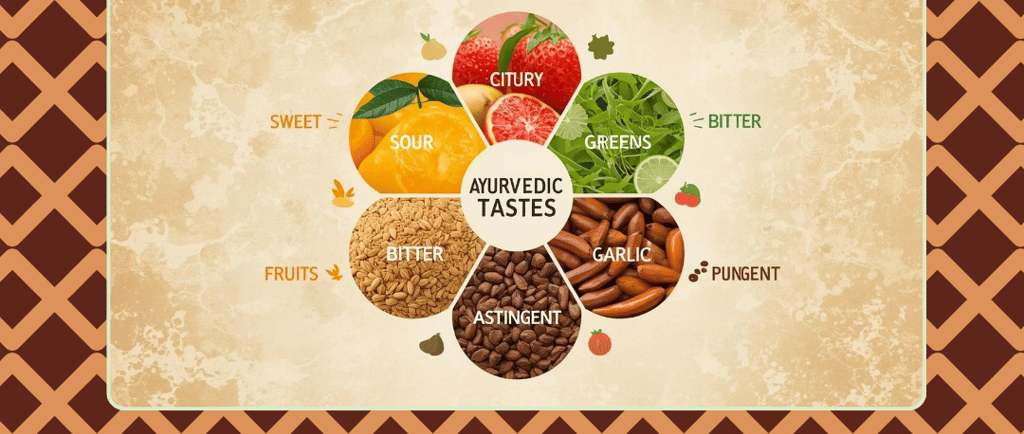Rasa
6 Rasa taste according to Ayurveda
Dr Dushyant Nirmal
9/20/20251 min read


रसाः स्वाद्वम्ललवणतिक्तोषणकषायकाः
षड् द्रव्यमाश्रितास्ते च यथापूर्व बलावहाः
Introduction of Rasa (Taste) by Dr Dushyant Nirmal certified Ayurvedic Doctor from India in Riga Latvia Europe 🌍
Ayurvedic Rasa: The Essence of Taste and Experience
In Ayurveda, Rasa is a profound and multi-layered concept that primarily translates to "taste," but its meaning extends far beyond mere flavor on the tongue.
At its core, Rasa is the first of the six tastes—Sweet (Madhura), Sour (Amla), Salty (Lavana), Pungent (Katu), Bitter (Tikta), and Astringent (Kashaya). Each taste is a combination of two of the five great elements (Panchamahabhutas) and has a specific effect on the three bodily doshas (Vata, Pitta, Kapha).
However, Rasa's significance doesn't end there. In a broader, more philosophical sense, Rasa also means "essence," "juice," or "vital sap." It is the essential, active principle of a substance—be it an herb, food, or even an emotion.
Finally, in the context of Ayurvedic pharmacy, Rasa Shastra is a specialized branch of medicine that deals with the preparation of powerful herbo-mineral formulations, often involving metals and minerals purified through intricate processes. These potent medicines are designed to have deep, transformative effects on the body and mind, to keep body healthy a person should eat all taste in a meal everyday.
From down to up taste are heavy astringent taste in more easy to digest and sweet taste is heaviest to digest
In summary, Rasa is the gateway through which we understand a substance's qualities, its effect on our physiology, and its ultimate therapeutic potential in Ayurveda.
